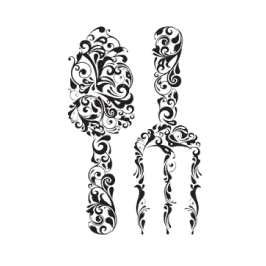Our Story
Tucked into the exquisite Knorhoek Valley north of Stellenbosch, Muratie Wine Estate, under the stewardship of Rijk Melck and his family, has been at the heart of a lot of passionate debate. This debate is centred largely around the desire to protect a century’s old wine experience that is a magnet for wine lovers around the world.
Muratie Timeline – What is in a name?
At Muratie, we honour our history and keep it alive in our wines and estate culture. Every wine in the Muratie range is named after a person who played an important role in the story of our farm, which dates back more than three centuries to 1685.
Meet the larger-than-life personalities embedded in the names of our wines:
1685 – The Story Begins
Laurens Campher
1685
The German soldier Laurens Campher was the first person to farm on Muratie from 1685. He was officially granted ownership of De Driesprong, as Muratie was originally known, in February 1699 by the then governor of the Dutch Cape Colony, Simon van der Stel. His instruction upon receiving the title deed of the farm was to “bezaayen, beplanten, bepoten, betimmeren“ – and failure to properly cultivate the farm would see him having to return it to the authorities. Today Muratie’s flagship white blend carries the name of our pioneer farmer.


Ansela van de Caab
1699
When Laurens first arrived at the Cape from his native Mohrow in Poland, he met and fell in love with a slave woman, Ansela van de Caab, who spent much of her early life captive in the Castle of Good Hope, Cape Town. To visit Ansela, Laurens would regularly travel the arduous 50 km between Stellenbosch and Cape Town by foot or ox wagon, as he didn’t own a horse. When Ansela was finally emancipated on 28 June 1695 and came to live with Laurens on the farm, they already had three young children. Their original homestead still stands on Muratie, as does the giant oak tree Laurens planted for Ansela. Our flagship Bordeaux-style red blend proudly bears her name.


1763 – The Start of the Melck Era
Martin Melck
1763
When the Camphers sold the farm in 1735, Muratie traded hands between 6 owners before Martin Melck bought the property in 1763. Like many of his predecessors at Muratie, Melck came to the Cape as a soldier in service of the Dutch East India Company. He was born in East Prussia, in the Baltic seaport of Memel, and was trained as a builder. Despite his humble beginnings, Martin Melck became an influential businessman and one of the biggest land barons in the Cape. After his death in 1781, his daughter Anna Catherina inherited Muratie who farmed it with her husband Johan David Beyers. The farm remained in the Melck-Beyers family for 120 years. Our award-winning Cabernet Sauvignon is named after this very distinguished owner of Muratie.


1909 – The Senator and His Family
The Senator
1909
Sir Walter Ernest Mortimer Stanford KBE CB CMG bought Muratie in 1908 and lived here until September 1911. Stanford entered the Cape Legislative Assembly in 1908 as an independent member for Tembuland and was selected to represent the views of the African people at the National Convention of 1909, which led to the Union of South Africa. He argued strongly for universal franchise, regardless of race and gender but his proposal was not accepted. From 1910-29, he served in the Senate. The Senator Cape Late Bottled Vintage 2015 pays tribute to this great leader, statesman and humanitarian.

Lady Alice Stanford
As the wife of a senator, Lady Alice Sarah Stanford would rub shoulders with ministers, dine at ‘Tuinhuis’, host balls, officiate at college sports days – and by all accounts every event she attended turned into a dance party. Hers was the life of the English ‘landed gentry’, from hunting and shooting to lawn tennis and fancy dress, so life at Muratie was very festive indeed after she bought it in 1909. This Méthode Cap Classique bubbly made from 100% Pinot Noir is a toast to a lady for whom every day was a celebration.


1926 – The Focus Turns to Art and Wine
George Paul Canitz
1926
The German George Paul Canitz acquired Muratie from Pieter Wouter Lotz, who took over the farm after the Stanfords’ brief tenure. He was an artist who was born in Leipzig and grew up in Saxony. He was inspired by the masterpieces of the Renaissance and spent time in Italy studying these works. He often drew inspiration from this bohemian time of his life when he lived on Muratie. His art studio where he spent endless hours painting can still be seen on Muratie along with many works from his collection. He lends his name to the Pinot Noir, a grape he helped to pioneer in the Cape.


Amber Forever
Canitz was a great lover of wine and often extolled its virtues. He enlisted the help of experts to improve the quality of wine made at Muratie. One such wine that quickly gained eminence was a golden Hanepoot he named Amber Forever, after the eponymous historical novel that was published the year the wine was first made. Legend has it however, that the name Amber was actually a reference to his muse, a beautiful woman who was often the subject of his romantic paintings. This wine is still made today from one of the oldest blocks of grapes on the farm.

Ben Prins
1957
Ben Prins, Muratie’s winemaker until 1987, was as unique as the wines he produced. Affectionately known as Barefoot Ben, he was a quiet, contemplative and exceptionally particular individual – both a perfectionist and a traditionalist. He had a great love of the soil and would often walk the steep slopes of the Simonsberg without shoes. Muratie’s sought-after vintage port was named in his honour, made from traditional Portuguese varieties.


Alberta Annemarie Canitz
1958
George Paul Canitz’s daughter Alberta Annemarie took over Muratie in 1958 when he passed away. She became one of the first women in South Africa to own a wine estate, and was actively involved in the winemaking and selling. Alberta Annemarie never married or had children, and like her father, she was an avid horserider who rode well into old age. She was a fiercely independent woman and passionate about preserving the history of Muratie, which is why the characterful Merlot was named after her.


1987 – Full Circle as the Melck’s Return to Muratie
Ronnie Melck
1987
In 1987 Ronnie (Ronald) Melck fulfilled a lifelong dream to return Muratie to his family’s ownership when Alberta Annemarie Canitz sold the farm to him. Ronnie was a direct descendant of Martin Melck and together with his wife Annatjie, devoted a great part of his life to establishing the modern wine industry in South Africa. Sadly he was only able to enjoy a few years on the farm before he died, but his gregarious spirit lives on at Muratie and in the name of our iconic Shiraz.


Mr May
Cornelius or Mr May as he was popularly known, planted and pruned many a vine at Muratie. His attention to detail and ability to predict the weather long before technology was incredible. Whenever there was a sliver of cloud on the south-west facing side of the Simonsberg Mountain, he would say rain was only two days away. Today still, we have yet to prove him wrong. In memory of our own ‘rain king’, we’ve added a deliciously accessible Grenache Noir to the Muratie range.


Johanna
Johanna Davids is Muratie’s longest living resident and a respected mother figure for all. She is an encyclopedia of knowledge and wisdom, having worked in the vineyards from a young age. She is now happily retired, but continues to bring beauty to the farm – by arranging the flowers in the manor house and cellar, and keeping everyone in check! This tenacious woman lends her name to Muratie’s dry rosé, a wine with almost as much personality as Johanna.


Isabella
2005
The vivacious Muratie Chardonnay is named after Isabella Melck, the eldest daughter of current custodians Rijk and Kim Melck. As a child her carefree, innocent spirit and butterfly kisses inspired her parents to create a wine that captures the purity of a grape that, like Isabella, thrives in the surroundings of the farm. Today it remains one of our most popular wines.
